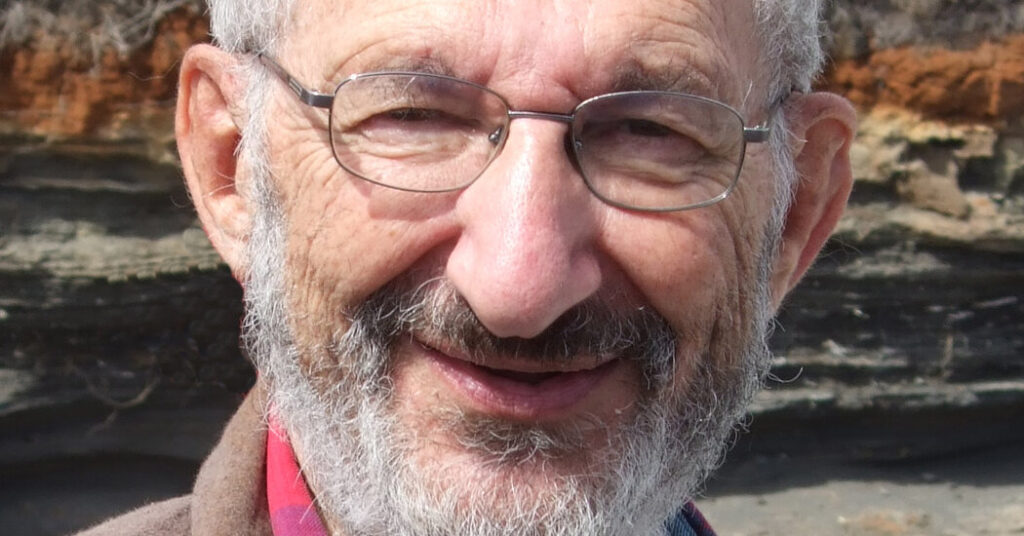Academic conferences are usually staid affairs, but the 1973 International Symposium on Gender Identity, held in Dubrovnik, Yugoslavia, was an exception. Everything was peaceful until a psychologist named John Money stood and yelled, “Mickey Diamond, I hate your guts!”
Milton Diamond, a sexologist who had gone by Mickey since childhood, was sitting on the other side of the room. Dr. Money and Dr. Diamond were bitter rivals: Dr. Money, a nationally recognized researcher at Johns Hopkins University, had long argued that sexual and gender identity are neutral at birth and shaped primarily by an infant’s surroundings.
Dr. Diamond, who was just beginning his career at the University of Hawaii, strongly disagreed, and had said so repeatedly — including in a widely read 1965 critique of Dr. Money’s work. He took particular issue with Dr. Money’s recommendation that intersex infants have surgery to “correct” their genitals.
Dr. Money rushed over to Dr. Diamond, getting in his face, furiously insisting he was right.
Dr. Diamond only replied, “The data is not there.”
At one point, eyewitnesses reported that Dr. Money slugged Dr. Diamond, though Dr. Diamond later said he didn’t remember it.
The incident, reported by the journalist John Colapinto in Rolling Stone magazine and in a subsequent book, “As Nature Made Him: The Boy Who Was Raised as a Girl” (2000), was especially heated because of a recent announcement by Dr. Money.
He had been working with a child who in 1965, after his penis was irreparably damaged during a circumcision, had undergone further surgery to remove his male genitalia. The child was then raised as a girl, taking on all the conventional physical and emotional characteristics of a female adolescent — happily, Dr. Money said.
Though the child was not born intersex, Dr. Money claimed that the case proved that gender and sexual identity were malleable and that intersex children should indeed receive surgery.
Dr. Money and an associate, Anke A. Ehrhardt, now a researcher in the field, presented their findings in a 1972 book, “Man and Woman, Boy and Girl.” The journalist James Lincoln Collier, writing in The New York Times, called it “the most important volume in the social sciences to appear since the Kinsey reports.”
But Dr. Diamond remained unconvinced, and said so, a position that fired up Dr. Money in Dubrovnik. The case study was inconclusive, he said, adding that the child, who was about 7 when the book was published, had not even reached puberty.
It was not until the early 1990s that Dr. Diamond managed to track down the child and the psychiatrist who had treated them, H. Keith Sigmundson.
What he found demolished all of Dr. Money’s claims.
The child, born Bruce Reimer but then raised as Brenda, had rebelled against the enforced upbringing, tearing off dresses and threatening suicide. At 14, the child’s parents agreed to stop hormone treatment, and allow him to live as a boy — now under a different name, David.
Worse, Dr. Diamond found that Dr. Money, who met annually with David and his twin brother, had abused the children, forcing them to simulate sexual activity and yelling at them when they refused. (Dr. Money denied the accusations).
Dr. Diamond’s findings, which he and Dr. Sigmundson published in 1997, rewrote not just Dr. Money’s case study, but how the medical community approached intersex infants generally.
Under Dr. Money’s influence, standard practice had long been for doctors to choose a sex for a baby with ambiguous genitalia. Dr. Diamond argued for the opposite: Identity could not be forced, intersex people deserved a place on the spectrum of human sexuality, and the decision to make changes to their body should be left to the individual.
Dr. Diamond stayed in touch with David, who eventually married and adopted his wife’s children. He died by suicide in 2004.
Today, while many doctors follow Dr. Diamond’s recommendations, other doctors and many parents still opt for infant surgery, according to Bo Laurent, the founder and former executive director of the Intersex Society of North America.
“Maybe we really have to think,” Dr. Diamond told the BBC in 1980, “that we don’t come to this world neutral; that we come to this world with some degree of maleness and femaleness which will transcend whatever the society wants to put into it.”
Dr. Diamond died on March 20 at his home in Honolulu. He was 90. His wife, Constance Brinton-Diamond, confirmed the death.
Milton Diamond was born on March 6, 1934, in the Bronx to Aaron and Jennie (Arber) Diamond, Jewish immigrants from Ukraine. They owned grocery stores in the borough, and the family moved frequently. He spent a part of his childhood in an Irish neighborhood, where some of the children, having never met a Milton before, gave him a name more familiar to them, Mickey. It stuck.
In 1955, Milton became the first student at the City College of New York to receive a degree in biophysics. After three years in the U.S. Army, he attended the University of Kansas and in 1962 earned a doctorate in anatomy and psychology, writing a dissertation on the effects of testosterone in utero.
Along with his wife, he is survived by four children from his first marriage, Hinda, Irene, Sara and Leah Diamond; three stepchildren, Maia James Tidwell, Kristina Brinton and Andrew Brinton; and 14 grandchildren.
Dr. Diamond taught for a few years at the University of Louisville, then moved to the University of Hawaii in 1967 to join the founding faculty of its new medical school. He took emeritus status in 2009.
After publishing his 1997 paper on Dr. Money’s work, Dr. Diamond spent several years developing guidelines for the care of intersex individuals. He also pushed against the idea that being intersex was a disorder and argued for its acceptance as a normal part of human sexuality.
Nature loves variety, he liked to say.


